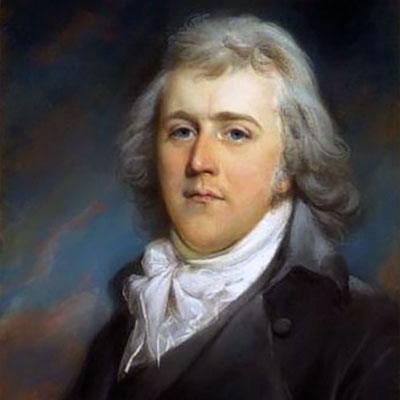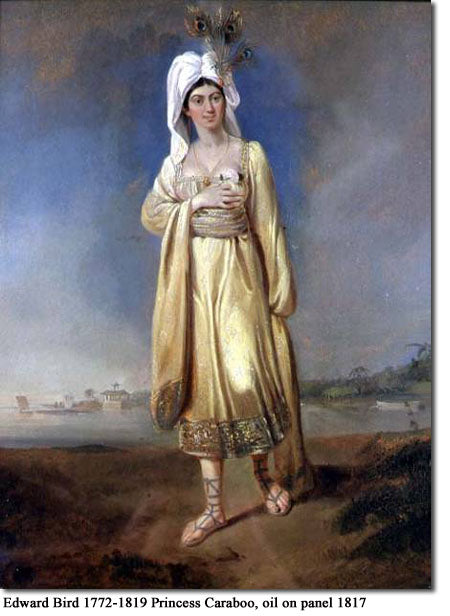The Patronesses of Almack's: The Arbiters of London Respectability
The Patronesses of Almack's: The Arbiters of London Respectability
Almack's Assembly Rooms was governed by a select committee of the most influential and exclusive ladies of the ton, known as the Lady Patronesses of Almacks. These "fair arbiters" created a temple of exclusivism for the balls held on Wednesday nights (the only activity of the club) by allowing only those of whom they approved to buy the non-transferrable annual vouchers, costing ten guineas (a guinea being a bit more than a pound sterling). Holding that voucher became the difference between society and Society. To not have it might mean simply that one had not applied. To lose one's voucher, though, meant that one had been tried and found wanting, a social disaster for those dedicated to their place in the ton. At different periods in the club's long history, there were six or seven Patronesses at a time. In 1814, they were:
 Lady Jersey (1786 - 1867)
Lady Jersey (1786 - 1867)
Lady Sarah Sophia Fane, daughter of the Earl of Westmoreland, married the 5th Earl of Jersey and became a leader of London society as a patroness of Almack's Assembly Rooms. The young Lady Jersey of Almack's fame is not to be confused with her mother-in-law, Frances, Lady Jersey, wife of the 4th Earl of Jersey, who was mistress to the Prince of Wales. (Prinny obviously preferred older women.) Sarah, sometimes called Sally, was determined, through a great show of personal virtue, to distance herself from the notorious reputation of her mother-in-law. Captain Gronow described her in his memoirs as "a threatrical tragedy queen; and whilst attempting the sublime, she frequently made herself simply ridiculous, being inconceivably rude, and her manner often ill-bred." She is reported to have introduced the quadrille to Almack's in 1815.
 Emily Cowper (1787 - 1869)
Emily Cowper (1787 - 1869)
The daughter of the infamous Lady Melbourne (her son was the future Prime Minister, Lord Melbourne), Emily was married to the 5th Earl Cowper. She was also the long-time mistress of Lord Palmerston and married him in 1839 after Cowper died. During the Regency years, she was one of the patronesses of Almack's Assembly Rooms and, according to Captain Gronow, the most popular of them. It should be noted that Lady Cowper and most of the other patronesses at that time were young women in their 20s and not the older dowagers some readers assume them to be. They wielded enormous social influence.
 Countess Lieven (1785 - 1857)
Countess Lieven (1785 - 1857)
Born in Latvia, Dorothea Benckendorff married Count Lieven, who was the Russian ambassador to England from 1812 to 1834. The countess immediately became a leader in London society, and by 1814, if not earlier, was elected one of the patronesses of Almack's Assembly Rooms, the first foreigner to be so honored. Gronow described as her "haughty and exclusive," though she is said to have introduced the German Waltz to Almack's. But she was much more than a social butterfly. The countess was a prominent political hostess and held the confidence of some of the most important statesmen in London and Europe. She was considered to be at least as politically important, if not more so, than her ambassador husband. Hers was an influential voice in diplomatic circles, and she even performed at least one secret diplomatic mission for the Tsar. Some time after leaving England, the count was made a Prince and Dorothea became the Princess Lieven. Though she suffered from ill health in the last decades of her life, she continued to be involved in politics and diplomacy. Her collected letters provide a wickedly gossipy insight into Regency England.
 Mrs. Drummond-Burrell (1786 - 1865)
Mrs. Drummond-Burrell (1786 - 1865)
Clementina Drummond-Burrell was the only surviving child of James Drummond, 11th Earl of Perth. She married Peter Robert Burrell, a great dandy of the day, in 1807. On his marriage, at his father-in-law's insistence, he joined his wife's family name to his. His father had been created Lord Gwydyr, and in 1820 he succeeded to that title; his mother(shown) was Lady Willoughby de Eresby in her own right, and in 1828 he also succeeded to this title, and Clementina became Lady Willoughby de Eresby. One of the young patroness of Almack's, she was considered, along with Lady Castlereagh, to be the highest stickler and overly grand. A number of Scottish Reels are named in her honor.
 Lady Castlereagh (1772 - 1829)
Lady Castlereagh (1772 - 1829)
Amelia Anne Stewart, Viscountess Castlereagh, was another of the lady patronesses of Almack's. She was the wife of Lord Castlereagh, the unpopular Foreign Minister, and accompanied him to the Congress of Vienna in 1815. A stickler for propriety, she is credited with establishing the rule that closed the doors of Almack's precisely at 11:00pm, and is reported to have once turned away the Duke of Wellington when he arrived a few minutes late. Though one of the older patronesses, she is unlikely to have been elected to the position prior to 1812 when her husband became Foreign Secretary. Lady Castlereagh is often mentioned in the novels of Georgette Heyer.
 Lady Sefton (1769 - 1851)
Lady Sefton (1769 - 1851)
Born Maria Margaret Craven, she married the William Philip Molyneux, 2nd Earl of Sefton in 1792. Her husband was known as Lord Dashalong because of his fondness for fast driving. He was one of the founding members of the Four-In-Hand Club. Lady Sefton was one of the Lady Patronesses of Almack's. The eldest of the 1814 patronesses as reported by Captain Gronow, she had likely held that position well before the younger set came on board as both she and her husband were socially prominent. She sponsored Mrs. Fitzherbert in London society. Portraits of Lady Sefton are hard to come by. This one portrays her mother, the celebrated writer, Elizabeth Craven, Princess Berkeley.
 Princess Esterhazy (1794 - ?)
Princess Esterhazy (1794 - ?)
Princess Esterhazy was born Princess Theresa of Thurn and Taxis and married Prince Paul III Anton Esterhazy, the Austrian Ambassador to England. Princess Lieven described her as "small, round, black, animated, and somewhat spiteful" and "she must at all cost be the focus of interest and general attention." As the youngest of the 1814 Lady Patronesses of Almack's, she was called by Gronow a bon enfant. Her husband was made Ambassador to the Court of St. James in 1815, but he and the princess must have been in London in some other diplomatic role prior to that if, as Gronow reports, she was already established at Almack's as a patroness in 1814.
Candice Hern is the author of several Regency Romance novels and an avid collector of period fashion accessories. Her latest story, "From This Moment On" can be found in, It Happened One Night, which features characters from her famous "Merry Widows" series. Reprinted with permission from Candicehern.com
Enjoyed this article? If you don't want to miss a beat when it comes to Jane Austen, make sure you are signed up to the Jane Austen newsletter for exclusive updates and discounts from our Online Gift Shop.



2 comments
boxuvulx
ehuzeyute
Leave a comment
This site is protected by hCaptcha and the hCaptcha Privacy Policy and Terms of Service apply.